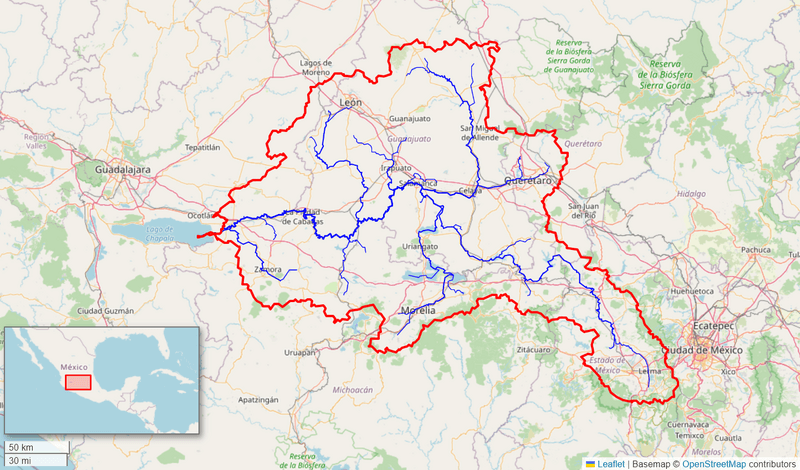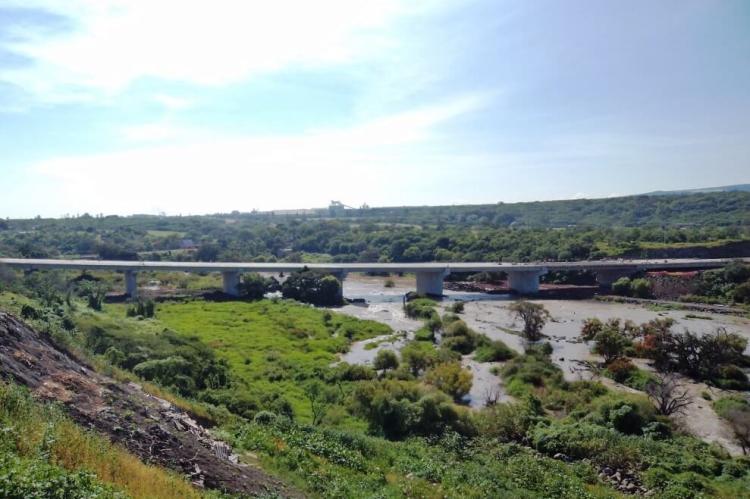The Lerma River: Mexico's Lifeline and Environmental Challenge
The Lerma River is a vital waterway originating near Toluca in Mexico. It flows through diverse landscapes and four states before emptying into Lake Chapala. It is the second-longest river in the country and significantly impacts the ecosystems and livelihoods of millions of people.
The Lerma River
Mexico's Lifeline and Environmental Challenge
The Lerma River, a significant watercourse in Mexico's intricate network of waterways, is renowned for its length and pivotal role in the Lerma-Chapala basin. Originating near Toluca in the State of Mexico, it winds through diverse landscapes, spanning the states of Mexico, Queretaro, Michoacán, and Guanajuato before reaching Lake Chapala. Stretching approximately 750 kilometers (466 miles), it stands as the country's second-longest river, profoundly influencing the ecosystems and livelihoods of millions along its path.
Geographical Significance
Starting from the Lerma lagoons near Almoloya del Río, nestled on a plateau over 2,600 meters (8,500 feet) above sea level, the river journeys through rugged terrain, cutting across valleys and plains as it flows southward. Along the way, it's joined by tributaries like the Queretaro, Laja, Turbio, and Guanajuato rivers, enhancing its flow and vitality.
The Lerma River Watershed
Spanning multiple states in central Mexico, the Lerma River watershed encompasses diverse ecosystems, including highland plateaus, mountain ranges, fertile valleys, and expansive plains. It is a vital water source for millions and supports rich flora and fauna diversity. From its Toluca headwaters to its confluence with the Santiago River in Jalisco, the Lerma River watershed regulates the hydrological cycle, mitigates floods and droughts, and sustains downstream ecosystems.
Environmental Challenges
Despite its natural beauty and ecological importance, the Lerma River faces significant environmental challenges, particularly concerning pollution and water quality. The river serves as a conduit for industrial, agricultural, and urban pollutants, leading to contamination with heavy metals and other toxic substances. As the Lerma River flows through populated areas and industrial zones, it accumulates contaminants from various sources, ultimately depositing them into Lake Chapala, Mexico's largest freshwater lake.
The pollution of the Lerma River poses a grave threat to the health of ecosystems and communities reliant on its waters. Contaminants in the river have adverse effects on aquatic life, water quality, and human health, leading to concerns about the sustainability of water resources in the region. Addressing pollution in the Lerma River requires coordinated efforts among government agencies, industry stakeholders, and local communities to mitigate pollution's impacts and restore the river's health and associated ecosystems.
Role in Water Management
The Lerma River holds a central position within the Lerma-Chapala basin, a vital hydrological system providing water and drainage for surrounding areas. Together with Lake Chapala, it forms part of the Lerma, Mexico, and Cutzamala water basins, essential for meeting the water needs of the region's cities, towns, and agricultural lands. When Lake Chapala reaches capacity, it discharges water into the Río Grande de Santiago, contributing to the area's hydrological cycle.
Water Management Challenges
The management of the Lerma-Chapala basin has been a subject of extensive literature and analysis, driven by two water crises that have affected the region. The first crisis stemmed from overexploitation and mismanagement of water resources, leading to declines in water levels and ecological degradation. The second crisis, linked to pollution and contamination, has highlighted the urgent need for improved water quality management and pollution control measures in the basin.
Conclusion
In conclusion, the Lerma River is a vital resource and a pressing environmental challenge in Mexico. While it serves as a lifeline for communities and ecosystems along its banks, pollution and water management issues threaten its health and sustainability. Addressing these challenges requires concerted efforts to promote sustainable water management practices, reduce pollution, and safeguard the ecological integrity of the Lerma-Chapala Basin for future generations. Through collaborative action and innovative solutions, it is possible to ensure the continued health and vitality of the Lerma River and its associated ecosystems.

Map depicting the Lerma River watershed in Mexico.
